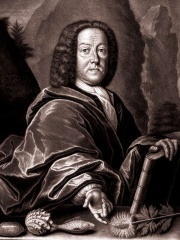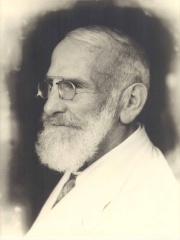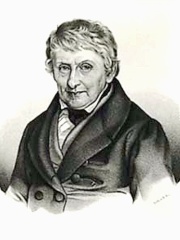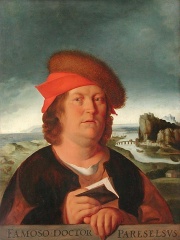
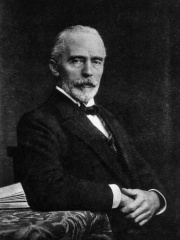

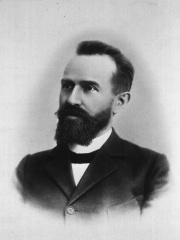

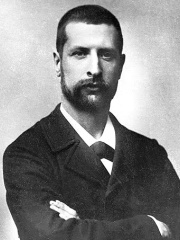

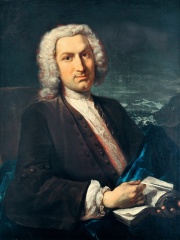
The Most Famous
PHYSICIANS from Switzerland
This page contains a list of the greatest Swiss Physicians. The pantheon dataset contains 726 Physicians, 18 of which were born in Switzerland. This makes Switzerland the birth place of the 8th most number of Physicians behind Poland, and Türkiye.
Top 10
The following people are considered by Pantheon to be the top 10 most legendary Swiss Physicians of all time. This list of famous Swiss Physicians is sorted by HPI (Historical Popularity Index), a metric that aggregates information on a biography's online popularity. Visit the rankings page to view the entire list of Swiss Physicians.

1. Paracelsus (1493 - 1541)
With an HPI of 85.08, Paracelsus is the most famous Swiss Physician. Her biography has been translated into 78 different languages on wikipedia.
Paracelsus (; German: [paʁaˈtsɛlzʊs]; c. 1493 – 24 September 1541), born Theophrastus von Hohenheim (full name Philippus Aureolus Theophrastus Bombastus von Hohenheim), was a Swiss physician, alchemist, lay theologian, and philosopher of the German Renaissance. He was a pioneer in several aspects of the medical revolution of the Renaissance, emphasizing the value of observation in combination with received wisdom. He is credited as the "father of toxicology". Paracelsus also had a substantial influence as a prophet or diviner, his "Prognostications" being studied by Rosicrucians in the 17th century. Paracelsianism is the early modern medical movement inspired by the study of his works.

2. Emil Theodor Kocher (1841 - 1917)
With an HPI of 73.92, Emil Theodor Kocher is the 2nd most famous Swiss Physician. His biography has been translated into 62 different languages.
Emil Theodor Kocher (25 August 1841 – 27 July 1917) was a Swiss physician and medical researcher who received the 1909 Nobel Prize in Physiology or Medicine for his work in the physiology, pathology and surgery of the thyroid. Among his many accomplishments are the introduction and promotion of aseptic surgery and scientific methods in surgery, specifically reducing the mortality of thyroidectomies below 1% in his operations. Kocher was the first Swiss citizen and first surgeon to ever receive a Nobel Prize in Medicine. He was considered a pioneer and leader in the field of surgery in his time.

3. Franz Mesmer (1734 - 1815)
With an HPI of 73.50, Franz Mesmer is the 3rd most famous Swiss Physician. His biography has been translated into 45 different languages.
Franz Anton Mesmer ( MEZ-mər; German: [ˈmɛsmɐ]; 23 May 1734 – 5 March 1815) was a German physician with an interest in astronomy. He theorized the existence of a process of natural energy transference occurring between all animate and inanimate objects; this he called "animal magnetism", later referred to as mesmerism. Mesmer's theory attracted a wide following between about 1780 and 1850, and continued to have some influence until the end of the 19th century. In 1843, the Scottish doctor James Braid proposed the term "hypnotism" for a technique derived from animal magnetism; today the word "mesmerism" generally functions as a synonym of "hypnosis". Mesmer also supported the arts, specifically music; he was on friendly terms with Haydn and Mozart.

4. Eugen Bleuler (1857 - 1939)
With an HPI of 72.70, Eugen Bleuler is the 4th most famous Swiss Physician. His biography has been translated into 48 different languages.
Paul Eugen Bleuler ( BLOY-lər; Swiss Standard German: [ˈɔʏɡeːn ˈblɔʏlər, ˈɔʏɡn̩]; 30 April 1857 – 15 July 1939) was a Swiss psychiatrist and eugenicist most notable for his influence on modern concepts of mental illness. He coined several psychiatric terms including "schizophrenia", "schizoid", "autism", depth psychology and what Sigmund Freud called "Bleuler's happily chosen term ambivalence". Bleuler remains a controversial figure in psychiatric history for his racist and ableist beliefs, as well as his implementation of eugenic practises in psychiatry based on these beliefs, most notably at the Burghölzli clinic in Zurich.
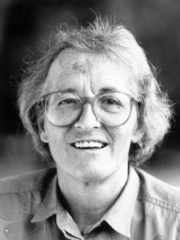
5. Elisabeth Kübler-Ross (1926 - 2004)
With an HPI of 72.54, Elisabeth Kübler-Ross is the 5th most famous Swiss Physician. Her biography has been translated into 37 different languages.
Elisabeth Kübler-Ross (July 8, 1926 – August 24, 2004) was a Swiss-American psychiatrist, a pioneer in near-death studies, author, and developer of the five stages of grief, also known as the "Kübler-Ross model". In 1970, Kübler-Ross delivered the Ingersoll Lecture at Harvard University, focusing on her book, On Death and Dying (1969). By July 1982, Kübler-Ross had taught 125,000 students in death and dying courses in colleges, seminaries, medical schools, hospitals, and social-work institutions. In 1999, the New York Public Library named On Death and Dying one of its "Books of the Century", and Time magazine recognized her as one of the "100 Most Important Thinkers" of the 20th century. Throughout her career, Kübler-Ross received over 100 awards, including twenty honorary degrees, and was inducted into the National Women's Hall of Fame in 2007. In 2024, Simon & Schuster released a list of their 100 most notable books, including Kübler-Ross's On Death & Dying. Stanford University's Green Library currently houses her remaining archives which are available for study.

6. Walter Rudolf Hess (1881 - 1973)
With an HPI of 72.36, Walter Rudolf Hess is the 6th most famous Swiss Physician. His biography has been translated into 55 different languages.
Walter Rudolf Hess (17 March 1881 – 12 August 1973) was a Swiss physiologist who won the Nobel Prize in Physiology or Medicine in 1949 for mapping the areas of the brain involved in the control of internal organs. He shared the prize with Egas Moniz.

7. Alexandre Yersin (1863 - 1943)
With an HPI of 70.71, Alexandre Yersin is the 7th most famous Swiss Physician. His biography has been translated into 36 different languages.
Alexandre Émile John Yersin (22 September 1863 – 1 March 1943) was a Swiss-French physician and bacteriologist. He is remembered for his work as a pioneer in microbiology and immunology. Yersin is the co-discoverer of both the Diphtheria and Tetanus toxins (1890 with Émile Roux) and of the bacillus responsible for the bubonic plague or pest (1894, with Kitasato Shibasaburō). The bacteria was later named in his honour: Yersinia pestis. Yersin also demonstrated for the first time that the same bacillus was present in the rodent as well as in the human disease, thus underlining the possible means of transmission.

8. Rolf M. Zinkernagel (b. 1944)
With an HPI of 69.17, Rolf M. Zinkernagel is the 8th most famous Swiss Physician. His biography has been translated into 48 different languages.
Rolf Martin Zinkernagel AC (born 6 January 1944) is a professor of experimental immunology at the University of Zurich. Along with Peter C. Doherty, he shared the 1996 Nobel Prize in Physiology or Medicine for the discovery of how the immune system recognizes virus-infected cells.

9. Albrecht von Haller (1708 - 1777)
With an HPI of 68.86, Albrecht von Haller is the 9th most famous Swiss Physician. His biography has been translated into 35 different languages.
Albrecht von Haller (also known as Albertus de Haller; 16 October 1708 – 12 December 1777) was a Swiss anatomist, physiologist, naturalist, encyclopedist, bibliographer and poet. A pupil of Herman Boerhaave and Jacob Winslow, he is sometimes referred to as "the father of modern physiology."
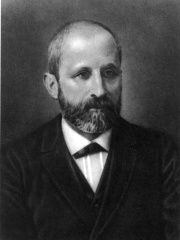
10. Friedrich Miescher (1844 - 1895)
With an HPI of 67.27, Friedrich Miescher is the 10th most famous Swiss Physician. His biography has been translated into 36 different languages.
Johannes Friedrich Miescher (13 August 1844 – 26 August 1895) was a Swiss physician and biologist. He was the first scientist to isolate nucleic acid in 1869. Miescher also identified protamine and made several other discoveries. Miescher had isolated various phosphate-rich chemicals, which he called nuclein (now nucleic acids), from the nuclei of white blood cells in Felix Hoppe-Seyler's laboratory at the University of Tübingen, Germany, paving the way for the identification of DNA as the carrier of inheritance. The significance of the discovery, first published in 1871, was not at first apparent, and Albrecht Kossel made the initial inquiries into its chemical structure. Later, Miescher raised the idea that the nucleic acids could be involved in heredity and even posited that there might be something akin to an alphabet that might explain how variation is produced.
People
Pantheon has 18 people classified as Swiss physicians born between 1493 and 1963. Of these 18, 3 (16.67%) of them are still alive today. The most famous living Swiss physicians include Rolf M. Zinkernagel, Paolo Macchiarini, and Daniel Mojon. The most famous deceased Swiss physicians include Paracelsus, Emil Theodor Kocher, and Franz Mesmer.
Living Swiss Physicians
Go to all RankingsRolf M. Zinkernagel
1944 - Present
HPI: 69.17
Paolo Macchiarini
1958 - Present
HPI: 57.43
Daniel Mojon
1963 - Present
HPI: 52.21
Deceased Swiss Physicians
Go to all RankingsParacelsus
1493 - 1541
HPI: 85.08
Emil Theodor Kocher
1841 - 1917
HPI: 73.92
Franz Mesmer
1734 - 1815
HPI: 73.50
Eugen Bleuler
1857 - 1939
HPI: 72.70
Elisabeth Kübler-Ross
1926 - 2004
HPI: 72.54
Walter Rudolf Hess
1881 - 1973
HPI: 72.36
Alexandre Yersin
1863 - 1943
HPI: 70.71
Albrecht von Haller
1708 - 1777
HPI: 68.86
Friedrich Miescher
1844 - 1895
HPI: 67.27
Johann Jakob Scheuchzer
1672 - 1733
HPI: 60.90
Maximilian Bircher-Benner
1867 - 1939
HPI: 59.97
Heinrich Rudolf Schinz
1777 - 1861
HPI: 59.56
Overlapping Lives
Which Physicians were alive at the same time? This visualization shows the lifespans of the 12 most globally memorable Physicians since 1700.



